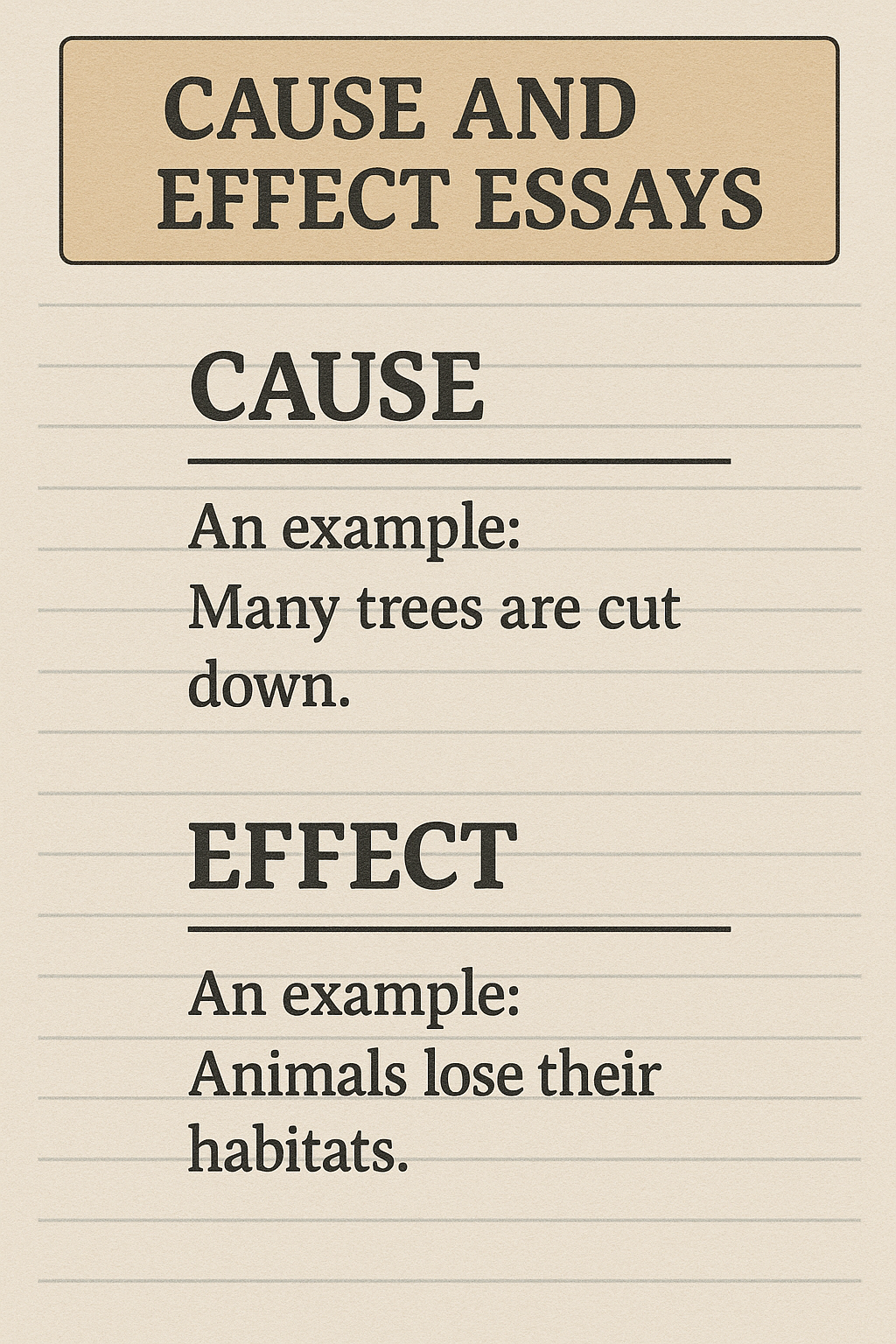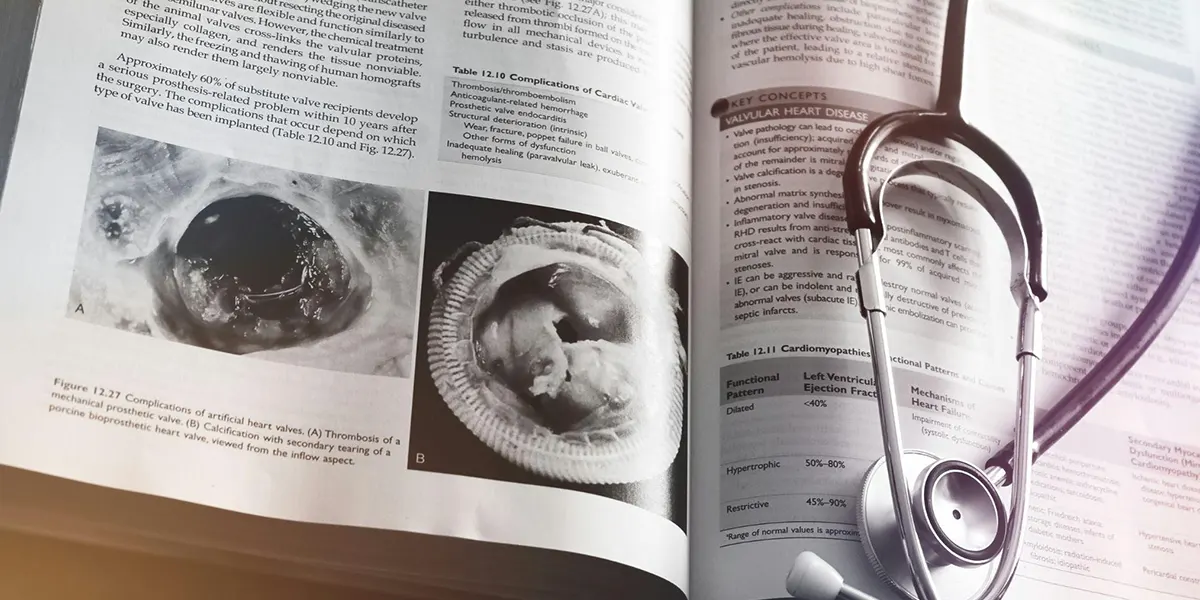Cause and Effect Essays! They sound really scary, right?
But trust me, they are not! They are all about explaining the cause and effect of a phenomena or maybe a situation.
So, if you are assigned this kind of essay and are blankly staring at your computer screens, not knowing where to start, then this blog is just right for you.
Here, we will learn today about the cause-and-effect essay format, structure, and how to organize them effectively. So, let's get started.
Types of Essay Writing
When it comes to essay writing, there is not one but differents types of essays like:
-
Narrative
-
Descriptive
-
Expository
-
Persuasive
-
Analytical
-
Depository
-
Process
-
Reflective
-
Argumentative
-
Compare and Contrast
-
Cause and Effect
-
Definition
If you want to learn more about this consider reading our blog Understanding Different Types of Essays
What Is a Cause and Effect Essay?
Before we move forward, let us first make it clear what cause-and-effect essays really are.
Basically, a cause-and-effect essay analyzes the relationship between two things. So, it answers questions such as:
-
What caused it?
-
What are the results?

I know it's a little confusing. So, for instance, if you are writing about pollution.
Then the cause might be the smoke from factories or too many cars on the road. At the same time, the effect would be health issues and a low air quality index.
Why Structure Matters
A good structure helps your reader understand your ideas clearly. Without it, your essay might feel confusing or jumpy. Think of your structure like a roadmap as it shows the path from the cause to the effect, step by step.
Basic Structure of a Cause and Effect Essay
The structure of your essays matters a lot as it helps your readers understand your ideas in a clear manner. So, make sure that you have the right structure to start writing. Those wondering how to format one, usually all types of essay writing follow a similar structure. However, there might be some changes depending on your requirements. Hence, make sure to look out for them.
Come on! Let’s look at the most simple structure that you can use to organize it:
-
Introduction
Always start your essay with a strong introduction that can hook your readers right away. Explain your topic and give a sneak peek into your essay.
Just make sure that you are writing it in a simple and clear manner.
-
Body Paragraphs
The intro leads to the main body of your essay. Here are two main ways to organize your body:
Block Structure
Here, you will explain all of the causes first, then the effects. The first part talks about the causes, and the second is about the effects.
Chain Structure
It explains the causes and effects one by one. First, the cause and then the effect in the effect in the same para. Then, the next paragraph with other causes and effects.
-
Conclusion
Finally, you end your essays by summarizing all of your key points. You can also add your personal opinions or recommendations here.
Tips to Organize Ideas
When you start writing, it is really easy to do with the flow. But the key is to stick to your topic and organize ideas to ensure you are going on the right track.
So, here are some tips to help you organize your ideas:
-
Use transition words like "because" or "Due to"
-
Stick to one point per paragraph
-
Keep your examples simple and relevant
The most unnoticed mistakes in a cause and effect essay:
While a cause and effect essay might seem simple but many students make small errors that affect the clarity of the essays.
1. Confusion in the causes:
Many students combine correlation and causation. When two things happen one after the other, it doesn’t mean that one caused the other. Identify the actual order of events, and also check the use of words to make sure that your essay represents the cause and effect relationship clearly.
Use phrases like “associated with” until you have good evidence to establish a cause-and-effect relationship. Always back your cause-and-effect relationship with credible data.
2. Oversimplification of causes and effects:
Mostly, students assume that one cause has one effect or one effect has one cause. This simplification and generalization of the causes and effects doesn’t capture the multifaceted and complex nature of the problem because most of the time, every cause has multiple effects, and every effect has multiple causes. So, look for the in-depth and complicated aspects of the problem.
3. Weak thesis statement:
A lot of students craft weak thesis statements that are vague or unclear. It actually makes your essay lose its direction, focus, and precision.
Also, many students write thesis statements in interrogative form, which is also wrong, so make sure you express yourself in the thesis statement and not question the readers.
4. Lack of organization:
Most of the time, students organize their cause-and-effect essay poorly. They randomly introduce and jump between ideas, which makes their essay lose its coherence.
It makes it hard for the readers to understand the structure and follow the argument. So, either choose the block structure or the chain structure according to your preference.
5. Poor transitioning:
Coherent transitioning in a cause-and-effect essay is really important. If students do not use transition words in their essays, their essays will not look logical and coherent.
Try to create a link between the ideas by using cohesive devices and transition words like consequently, in addition, etc.
6. Not adding counterarguments:
Many students don’t think that counterarguments are important to add. They only add their point of view, perspectives, and ignore others.
This makes their argument lose its worth because it adds bias and incompleteness to the essay. So briefly, you must add counterpoints and back them with evidence to show that your analysis is up to the mark.
7. Lack of evidence and examples:
Search for strong evidence because even if you have a lot of arguments, but no evidence, then your essay will not look convincing, instead just a list of opinions.
Use strong sources, data, and stats to strengthen your arguments.
8. Using the same phrases:
Repetition of certain words and phrases shows that you lack information and have not researched well.
You can use new vocabulary or synonyms to show that you have an in-depth knowledge of the essay topic.
Final Thoughts
In a nutshell, writing a cause-and-effect essay might seem like a hard task for students. But once you know how to pull it off, it will get easier for you.
With the right structure, your ideas can flow in a natural manner. Just make sure that you are explaining the cause and effects of phenomena in a very clear manner to make it easy to understand for your readers.
Happy Writing!










